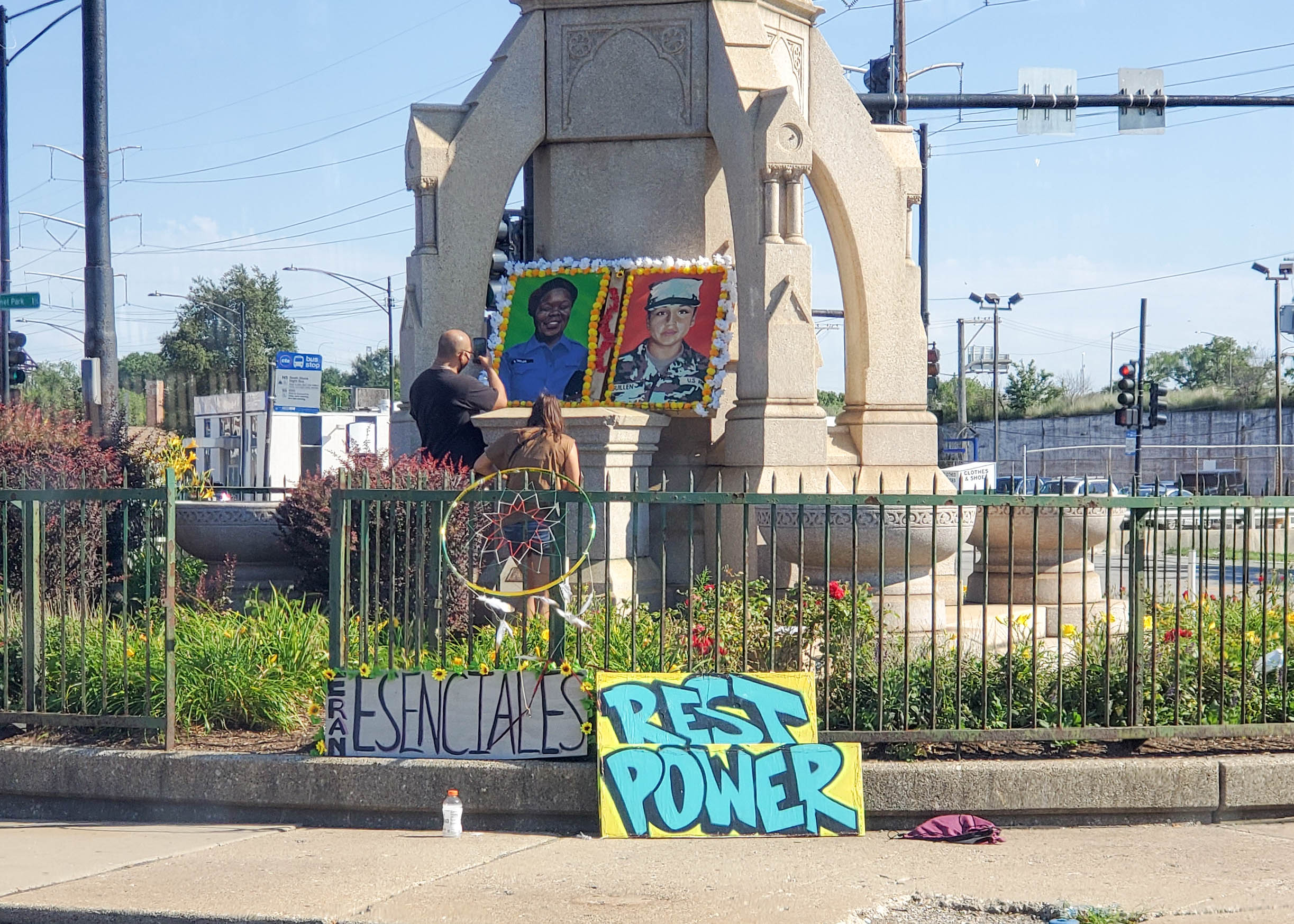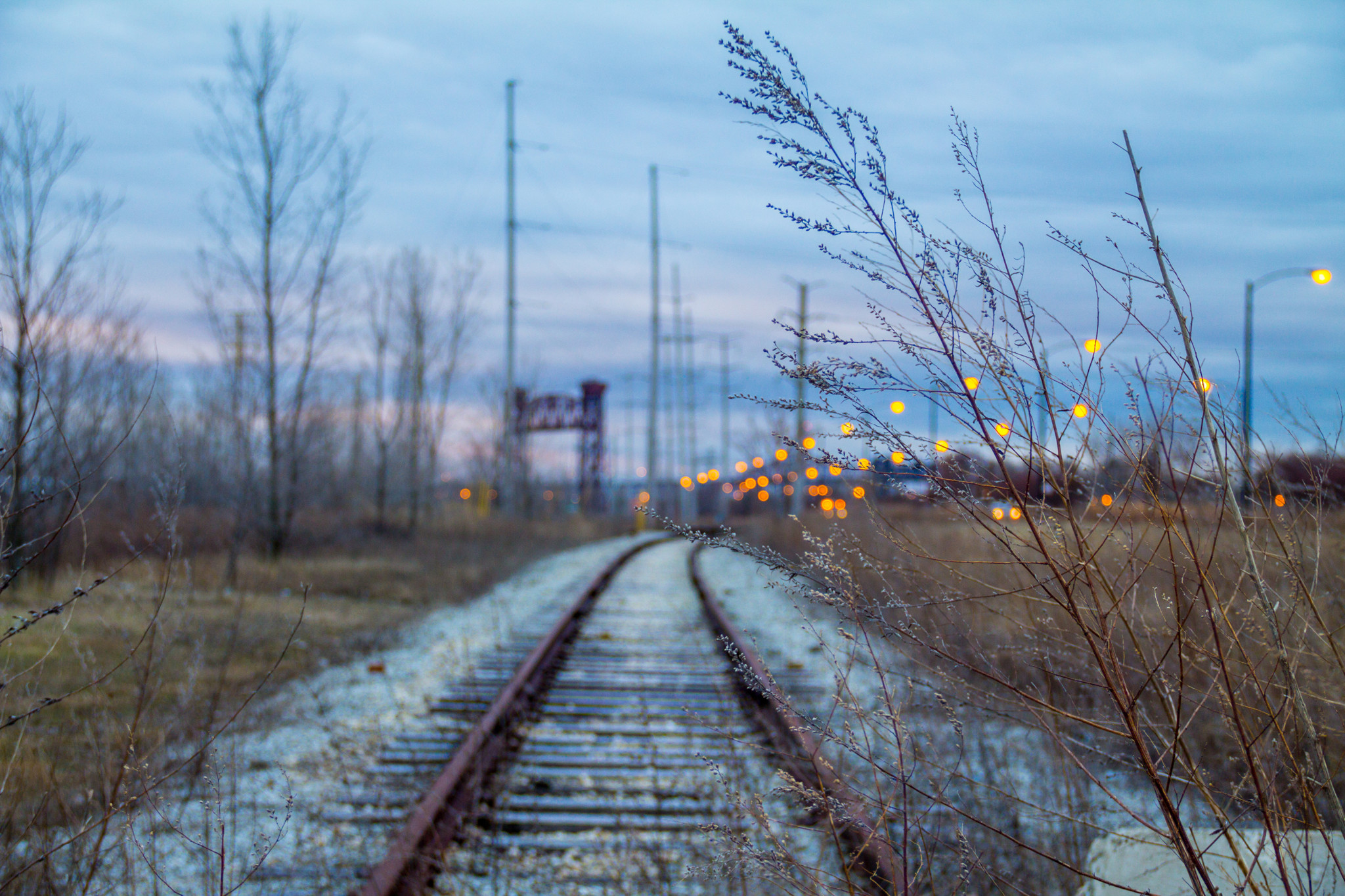- Best Replacement for a Christopher Columbus Statue
- Best Tucked Away Café
- Best Art Space to Rally the Community
- Best Steel Magnolia
- Best Youth Organizing
- In Memoriam: Carlos Rosas of Calumet Fisheries
Any time I’m in the Loop or on the North Side, people ask me where I’m from. I tell them South Chicago. Then they ask me to specify which neighborhood, presuming I meant the South Side in general. I repeat: South Chicago. Only when I give up, I say, “Close to the border with Indiana, but very much still in Chicago.” Although I was not born here, I’m adamant about the nomenclature because of how the neighborhood has shaped me and my fellow residents.
Oftentimes, the barrio can feel like a small town because everyone knows everyone; there are usually only about two or three degrees of separation at most. Many of us still follow the old Chicago tradition of belonging to a certain parish and/or school. Many families who lived in the same houses since kindergarten still live in those homes.
However, the erasure that the neighborhood experiences even by other Chicagoans belies the reality of a neighborhood that sits along so much lakefront. Michael Innis-Jiménez’s book Steel Barrio: The Great Mexican Migration to South Chicago, 1915-1940 is required reading if one is to understand how the neighborhood shifted from mostly Eastern European to the mostly Black and Latinx community it is today; how a previous influx of Mexican immigrants created an identity and home despite residents that at the time were hostile to Black and Latinx people. Those Mexican immigrants built spaces, like the first church in the city to serve people like them, and introduced baseball leagues to set roots here. As overlooked as the neighborhood is, there is still a sense of potential.
South Chicago residents are well aware of our disparities: public transportation into Chicago’s economic hubs is lacking, and people here continue to be threatened with health-adverse industries like General Iron. South Chicago was also one of the neighborhoods that experienced property damage on May 31 due to outrage over police brutality.
However the very next day, people in the neighborhood promptly organized a cleanup starting at Nine 3 Studio that, like the steel that was forged along Lake Michigan decades prior, showed a resilience, pride in community, and a will to defy typecasting for a neighborhood I believe is one of Chicago’s best-kept secrets. (Francisco Ramírez Pinedo)
Neighborhood Captain Francisco Ramírez Pinedo is a freelance web developer and contributing editor for the Weekly based in South Chicago covering labor, tech/cybersecurity, politics, immigration, arts, and design.
Best Replacement for a Christopher Columbus Statue
Memorial to Breonna Taylor

The police murder of George Floyd in Minneapolis drove demonstrators to the streets in Chicago and around the country to protest state violence and systemic racial injustice, toppling statues of slaveowners, imperialists, and oppressors who ended up enshrined in bronze after shackling others in metal chains. Protestors razed statues of Robert E. Lee, Albert Pike, and anonymous confederate soldiers across the country.
Many cities removed statues of Christopher Columbus as popular opinion turned against the Italian explorer’s genocide of indigenous people. Amid widespread protests, Chicago took down Columbus statues in Grant Park downtown, in Arrigo Park in Little Italy, and, eventually, in a pedestrian island in the triangular intersection of 92nd Street, Exchange Avenue, and South Chicago Avenue in South Chicago.
After initially dodging the attention of protestors, the seven-foot-tall bronze Columbus Monument at Drake Fountain on the Far South Side was the last to be “temporarily” removed in response to public outcry (none have been replaced). 10th Ward Alderwoman Susan Sadlowski Garza lobbied to have the statue taken down from the spot it occupied since 1909 after it was donated by hotelier John B. Drake.
Community group Bridges // Puentes: Justice Collective of the Southeast put up an impromptu makeshift memorial to Breonna Taylor, whom Louisville police murdered in her own home in the middle of the night with little accountability thus far. The Chicago Police Department removed the tribute to Breonna within a day (it now resides at Nine 3 Studios), but its ephemeral nature aptly illustrated how the powers that be suppress dissent and seek to preserve the old guard with little regard for what the public demands. (Joseph S. Pete)
Best Tucked Away Café
Dulce’s Café

It had been a long time since South Chicago could count on a small locally owned café in the neighborhood. The neighborhood had not had one since Sol y Luna Café, located just steps from the 92nd Street entrance of the Metra Station, closed in the early 2000s.
But then, in 2016, came Dulce’s Café. Located right across the street from the Church of the Immaculate Conception, the café has become a wholesome addition to the neighborhood. Throughout its existence, it has frequently changed decor, but a welcoming atmosphere has always been a constant. In addition to caffeinated beverages, it also offers a revolving menu that has included smoothies, juices, and even piña coladas. Sandwiches are also a draw of Dulce’s, where they are served alongside the occasional homemade Mexican appetizer. Most recently, traditional embroidered masks have been featured front and center on their counter, another sign of the changes that are necessary to protect a community hard-hit by the coronavirus. Before the COVID-19 pandemic, it is easy to imagine Dulce’s Café filled with parents demanding an eye-opening tonic, and children, a sugar rush after a long school day. Outdoor events were also commonplace. But now, as with every small business around the city, the small space seems vast and empty. These businesses count on only a fraction of what was there before the COVID-19 pandemic made local businesses like Dulce’s worry about their future.
However, the eclectic nature of Dulce’s is one of its biggest draws. During the week, with schools moved entirely online, Dulce’s was one of the few places to sit down and calmly read a book or fill a crossword puzzle, and it’s something to look forward to once the city opens up after what has been a calamitous year. (Francisco Ramírez Pinedo)
Dulce’s Café, 2957 S. 88th St. Monday–Saturday, temporarily from 7:30am–3pm; closed Sunday. (773) 672-0839. facebook.com/dulcescafee
Best Art Space to Rally the Community
Nine 3 Studio
Just last year, Nine 3 Studio opened as a catalyst for visual art—and was recognized as such in 2019 BoSS—and this year the art studio opened its doors to community organizers and members coming together to bring awareness and to support the Black Lives Matter movement.
For Nine 3 Studio owner Roman Villarreal—who began making art back in the seventies, a time when art, as he described, had a meaning and touched on the issues of the Vietnam War—this movement has brought a change to the community and a change to art. “The art work has changed from being nice to look at to issue-oriented art. Now we’re going back to the old days where art conveyed a message,” he told the Weekly.
So far in 2020, the property has served as a place for community members to clean up following the riots as a result of the George Floyd and Breonna Taylor murders and soon after was used as an altar and place to pay respects for Breonna Taylor after Kentucky’s Attorney General decided not to pursue wrongful death charges for the officers who killed her.
“You learn to share your space whenever you’re doing something like this movement, it’s all word of mouth,” said Villarreal. (Maria Maynez)
Nine 3 Studio, 9300 S. South Chicago Ave. facebook.com/villarrealartstudio
Best Steel Magnolia
Southeast: A City Within a City
Southeast: A City Within a City is a steel-strong documentary film in the making, directed and produced by Far Southeast Side native filmmaker Steven J. Walsh. The endeavor was originally inspired by Walsh wanting to learn more about his grandfather, a Mexican American former steel mill worker named Roger “Coco” Gomez. It has now come to tell the story of not only Walsh’s grandfather, but of how four once-thriving communities—Hegewisch, East Side, South Chicago, and South Deering—were depleted of middle-class wealth and resources in the aftermath of the closing of the Southeast Side’s steel mills.
Walsh’s artistic filmmaking vision aims to use a varied mix of cinematic techniques along with a wide range of voices to tell the story. Walsh envisions the traditional person-to-person video interview sharing screen time with music videos, silent film clips, animation, and dramatic reenactments of true events—all of which will bolster the shared experiences of a variety of real-life characters, each intimately connected to the neighborhood, from artists, elders, and activists to gangsters, politicians, and scholars.
South Chicago native and legendary painter and sculptor Roman Villarreal is just one of the voices sharing his pride for the neighborhood as he reminisces about the beauty and culture from days past and speaks hopefully about what is possible for South Chicago next.
Southeast: A City Within a City is expected to be released this winter, and is an expert blend of grit, pride, and ingenuity used to give an accurate accounting of all the contributing factors to the rise, fall, and potential rebirth of the steel-strong South Chicago neighborhood. (Nicole Bond)
Southeast: A City Within a City should be released this winter. Find more information and donate to its Kickstarter at kickstarter.com/projects/southeast/southeast-a-city-within-a-city-0.
Best Youth Organizing
Alliance of the Southeast
Juan Gonzáles, twenty, joined the Alliance of the Southeast’s (ASE) Youth Leadership Council (YLC) in 2019 because he didn’t feel there was much he could do standing alone with a sign on 106th and Ewing.
“I mean, maybe some passing cars might see it, but that’s not going to get me far. With the YLC, I have tools. I have these resources. I have people that I know to help me,” he said. “As a team, our voices are a lot stronger. I’m very thankful for them.”
Skylar Spratt, thirteen, joined after one of her classmates introduced her. It’s helped her feel less alone, especially after her mental health declined during quarantine.
“We become really vulnerable with each other,” she said. “I realized I’m not the only one who goes through certain stuff. There are people my age who are going through the same things as me”
ASE founded the YLC in 2012 as a way to combat neighborhood violence by giving Southeast Side youth a sense of empowerment. The council provides leadership training for twelve- to seventeen-year-olds wanting to get involved with social justice efforts in the community.
Youth/Anti-Violence Coordinator Oscar Sanchez teaches members to look at an issue or problem in their community, and then provides them with the skills and resources necessary to find a solution. He said it’s an effort to mobilize them to become grassroots leaders themselves, so they can implement change independently.
“How do we expect youth to be the leaders of the future if we don’t give them any say in what we’re doing now?” Sanchez said. “We need to make sure they’re educated more than we were, educated from our experiences, so that they’re used to being in those positions instead of being tokenized.”
The YLC focuses on a slew of issues, but this year’s biggest concerns are community investment, mental health, and youth power. Sanchez said these coalesce into the campaigns they’ve been working on with other organizations, like environmental justice and police brutality.
The council hosts an annual back-to-school event—this year they gave out school supplies, mental health items, and masks. They also organize and partake in events like anti-violence rallies and Black Lives Matter marches. Members of the YLC are paid a stipend for every meeting they attend, and the meetings consist of things like peace circles, mental health check-ins, watching and discussing poetry competitions, and working together to craft solutions for issues in their communities.
“We’re the generation that’s going to continue to grow up here. Even when our parents are gone, this is still going to be the community that we grew up in,” Spratt said. “It’s important to represent our communities in a positive way, and not just with the things we do, but also with what goes on.”
This past year, ASE has worked on getting community input for developments, passing out over 10,000 masks and hand sanitizer bottles for residents on the Southeast Side, and urging developments to focus on things like local job hires, supporting local businesses, and affordable housing.
After City Hall announced they were signing a contract with General Iron Industries, a scrap metal recycler with a serious history of air pollution, ASE teamed up with other organizations in the 10th Ward for a demonstration outside of Mayor Lori Lightfoot’s house in Logan Square to deny General Iron’s relocation permit.
“We definitely deserve a voice in all these decisions that go on around our community,” Gonzales said. “I live here…I want my community to be represented by me rather than a bunch of people who barely know the community.” (Patsy Newitt)
Alliance of the Southeast, 9204 S. Commercial Ave., ste 301. (773) 221-8908. asechicago.org
Read an In Memoriam for Carlos Rosas of South Chicago’s Calumet Fisheries here

